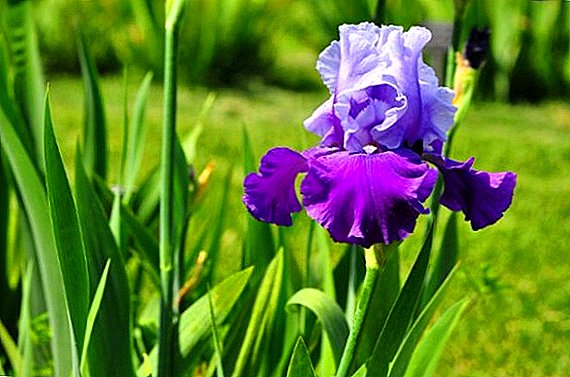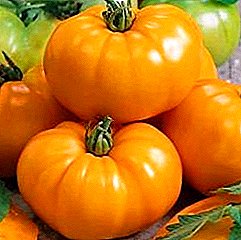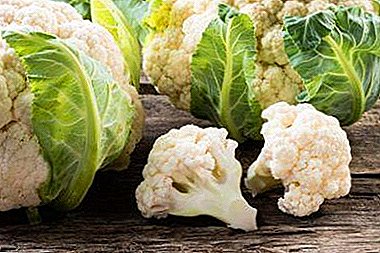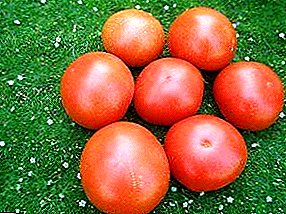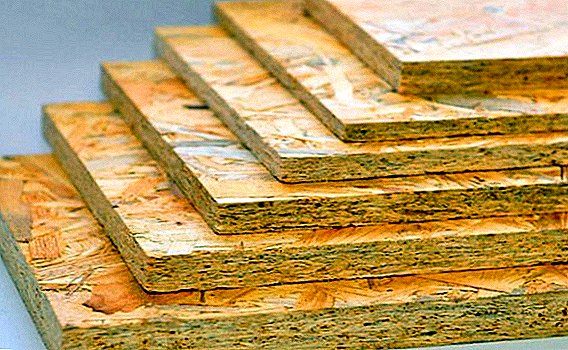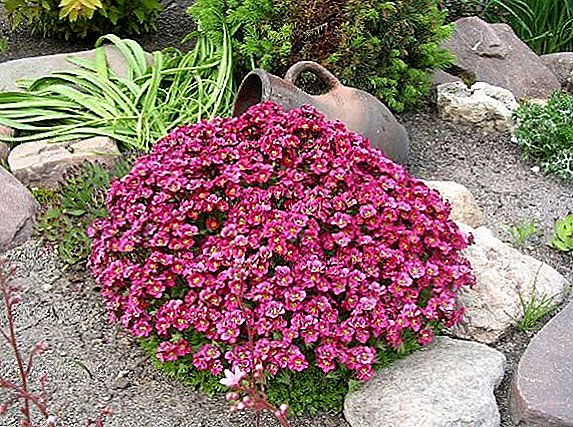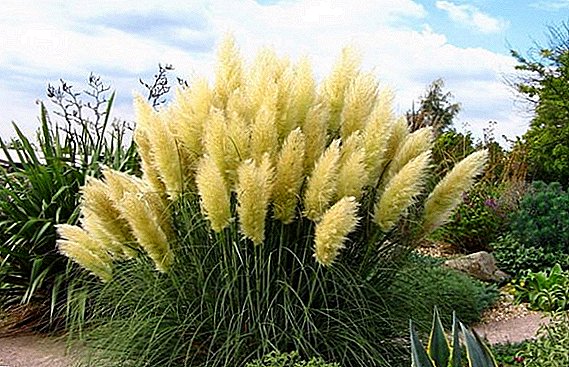 When raising cattle before livestock breeders, a dilemma arises: how to fully feed and fill pets but not increase the cost of keeping them. Fodder yeast allows animals to quickly gain weight and grow healthy, as they contain proteins and vitamins in the right amount. They are not used as independent feeds, but are added to the basic diet, which significantly reduces the cost of raising livestock. Consider the article description of this additive and features of the application.
When raising cattle before livestock breeders, a dilemma arises: how to fully feed and fill pets but not increase the cost of keeping them. Fodder yeast allows animals to quickly gain weight and grow healthy, as they contain proteins and vitamins in the right amount. They are not used as independent feeds, but are added to the basic diet, which significantly reduces the cost of raising livestock. Consider the article description of this additive and features of the application.
What is fodder yeast
Fodder yeast is a valuable protein supplement, thanks to which breeders get excellent results when growing cattle. They are an indispensable supplement to premixes and combined mixtures, which favorably affects animal weight gain and 20% feed savings.
Did you know? Not red leads the bulls rage. In fact, cows are color blind and do not distinguish between red and green. A furious attack in bullfighting on a bullfighter is a reaction of the bull not to the scarlet color, but to the annoying melting of a rag before your eyes.Yeast protein is perfectly digested, has a high nutritional value and due to these qualities it firmly took place between the proteins of animal and vegetable origin. This additive looks like powder, flakes or granules.

What and how to do
For the production of yeast feeds at enterprises, special premises or workshops are used with a constantly set temperature and sterile equipment. Make yeast nutrient mixtures for cattle can be at home.
As raw materials for yeast feed are used:
- sunflower seed husks;
- corn stalk;
- reeds and straw;
- wood waste.
According to GOST (paragraph 20083-74), fodder yeast is produced without the use of urea or other non-protein nitrogenous substances.
Find out more about cattle feed additives.
Why give cows
In cow food, yeast compensates for the deficiency of vitamins and amino acids, they are mixed into the main food. In ruminants, the stomach consists of several chambers (rumen, nets, abacus, and books).  Food eaten by cows has a different digestibility and, moving through the anvil paths on the way to the main stomach, undergoes fermentation under the influence of microorganisms that are in a large number in yeast food, thanks to which they are well absorbed.
Food eaten by cows has a different digestibility and, moving through the anvil paths on the way to the main stomach, undergoes fermentation under the influence of microorganisms that are in a large number in yeast food, thanks to which they are well absorbed.
The experience of livestock breeders and scientific studies have shown that yeast has a positive effect on the gastric microflora of cows, significantly increasing the appetite of livestock and the degree of assimilation of food.
Did you know? The cow has 32 teeth and makes chewing movements about 40-50 times per minute, while the animal chews up to 8 hours a day and moves its jaws about 40,000 times a day.
Chemical composition
Feed yeast contains:
- food protein - 32-38%;
- dietary fiber - 1.8%;
- fat - 1.8%;
- fiber - 1.2-2.9%;
- protein - 38-51%;
- ash - 10%.

Feed yeast is also a source:
- vitamins D, K and E;
- enzymes useful for digestion;
- hormones that help the body absorb proteins and carbohydrates.
When make up a cow diet, be sure to take into account what products it consists of. Usually, there is not enough protein in the finished feed. If we proceed from the requirement of 110 grams of protein per 1 feed unit, then 20-30 grams per feed unit is missing in the finished feed.
Important! Modern fodder yeast is grown on a nutrient medium, they contain a large amount of B vitamins, but absolutely no vitamin B12.The lack of protein in food leads to poor digestion and digestion, weight gain and milk production decreases. Therefore, it is better to add to the cow menu the yeast, in which there is an increased amount of protein. Such yeast is obtained in the manufacture of this protein supplement from the waste of enterprises engaged in the production of sugar, alcohol or woodworking.

Feed additive in cattle ration: benefit and harm
Benefits of bovine yeast feed:
- rapid weight gain;
- increase of yield;
- good digestibility of food;
- beneficial effect on the microflora of the stomach;
- stable work of the gastrointestinal tract;
- increase in the number of viable spermatozoa in sires;
- a significant reduction in the cost of growing livestock.
Since yeast feeds cannot be overdosed, their use cannot harm cattle. All known qualities of this feed are only positive.
We advise you to read about how to properly fatten cattle.
How to give fodder yeast to cows: dosage, instruction
Producer enriched with yeast is also beneficial for producers, contributing to an increase in the number of viable sperm in sperm. Yeast additives begin to be included in the diet 15 days before the planned mating of animals or the collection of sperm for subsequent artificial insemination.  Bulls are offered food with this protein supplement during the entire period of mating, based on the amount of 500-800 grams per individual per day. Dairy cows are fed fodder yeast to increase milk production. Each individual is fed from 500 to 800 grams of such additives daily, along with the main feed.
Bulls are offered food with this protein supplement during the entire period of mating, based on the amount of 500-800 grams per individual per day. Dairy cows are fed fodder yeast to increase milk production. Each individual is fed from 500 to 800 grams of such additives daily, along with the main feed.
Did you know? A cow's stomach (scar) holds about 150 liters of food that is partially digested — this volume can fill a medium-sized bath.
Yeast additives increase the daily milk yield from each animal to 2 kilograms. The largest portion of yeast additives per animal per day is 1 kilogram: they are added to cereal and combined mixtures.
Yeast is added to the main feed intended for growing calves. Excellent results of such mixing are visible when there is not enough hay in the diet of calves or it is of poor quality. Empirically established the usefulness of yeast, used in conjunction with sour silage.
The daily rate per animal is 200 to 300 grams of nutrient yeast. Calves willingly eat this supplement only in mixtures with the main food; therefore, as they mature, it is recommended to increase the size of the supplement according to the size of the serving. 
How to make your own hands at home
Yeast helps make cattle food more nutritious and healthy. The essence of this process is that the feed is saturated with lactic acid bacteria, which improve their taste and cause the appetite of cows.
Yeast is carried out in a warm and absolutely clean room, where the temperature is kept within +18 ° C. The inventory with which the procedure is carried out must also be kept clean. If these conditions are not fulfilled, yeast can not be successfully performed. For dilution of 1 kg of grain mixture take from 1 to 1.5 liters of water.
Important! It is not recommended to yeast cake, since it is difficult to carry out the procedure correctly with this feed. If the yeast cake was still done, as a result, the feed loses most of the protein.
Yeast (10 g per 1 kg of feed) is added to the cereal mixture mixed with water. In order for the yeast to succeed, the feed must be heated to +25 ° C. This temperature should be maintained for 5-6 hours: during this time the contents should be mixed every hour. At the end of this time, the mixture is ready for use by cattle.
Video: how to make yeast food for animals There are three ways of yeast: with brew, without brew, on sourdough. The starter process is used only when there is an acute shortage of yeast.
On the brew - the cooking process is divided into two stages.
The first stage (cooking sourdough):
- It takes 1 kg of Baker's yeast, which is diluted in 2 liters of slightly warm water.
- In a suitable size container pour 50 liters of lukewarm water and liquid with previously diluted yeast. Everything is thoroughly mixed.
- In this capacity, 20 kilograms of concentrated feed are poured and mixed until homogeneous in order to saturate the solution with oxygen.
- The solution is left to ripen for 5-6 hours.
Did you know? In the wild, cows can live over 20 years. The age of the animal can be determined by the rings on the horns.The second stage (yeast):
- The brew prepared after the end of the first stage is mixed with 100-150 liters of warm liquid.
- After mixing is completed, concentrated feed (80 kg) is poured there.
- The resulting mixture is left to ripen for 3 hours, stirring well every hour. At the end of the cooking time, the yeast food is ready to eat.
 The full cycle of yeast food preparation for this recipe takes from 7 to 9 hours.
The full cycle of yeast food preparation for this recipe takes from 7 to 9 hours.Did you know? The pregnancy of a cow lasts as much time as a human one - 9 months.
Without sponge - differs from sponge method in that the process of yeast immediately begins in it:
- It takes 1 kg of Baker's yeast, which bloom in 2 liters of warm water.
- 200 liters of slightly warmed water are poured into a suitable-sized container, and yeast previously dissolved in a liquid is also poured into it. Everything is mixed until homogeneous.
- Further in the tank, gradually stirring, pour 100 kilograms of feed.
- To complete the process of yeast, it is necessary to leave the resulting mixture for 9 hours. In the process of maturation every 60 minutes, the mixture must be thoroughly mixed to saturate with oxygen.
The first stage (cooking sourdough):
- In 1-2 liters of water diluted 1 kg of baker's yeast.
- Divorced yeast is added to 40 kg of carbohydrate feed, everything is mixed. No more liquid is added to the feed at this stage.
- The thick mixture is stirred every 20 minutes.
- After 6 hours, half of the resulting mixture (sourdough) is poured for use in yeast. The remaining half of the dough is mixed with 20 kilograms of fresh feed and again left for maturation.

The second stage (yeast):
- The selected half of the prepared brew is mixed with 100-150 liters of warm liquid.
- 80 kilograms of feed are poured into the liquid during continuous stirring.
- Yeast feeds ripen for 3 hours, every hour the mixture needs to be thoroughly mixed.
Important! To obtain sourdough on sourdough, only feed mixtures on a carbohydrate basis are suitable. Products used for yeast should only be fresh.At both stages of the preparation of yeast food on leaven it will take approximately 9 hours.
This procedure helps to saturate the received feed with proteins, gives them a pleasant acidity and aroma, contributing to the emergence of appetite in cattle. The resulting products are saturated with vitamins, which can further prevent the emergence of cattle diseases such as rickets in calves, skin ailments, paratyphoid fever.  Yeast feed introduced into animal nutrition favorably affects the growth, development, weight gain and milk yield of cattle. For over a hundred years, the beneficial effects of yeast feed mixtures in cattle rearing have been known around the world.
Yeast feed introduced into animal nutrition favorably affects the growth, development, weight gain and milk yield of cattle. For over a hundred years, the beneficial effects of yeast feed mixtures in cattle rearing have been known around the world.
We recommend reading more about the feeding of calves, sires, milk and dry cows.
Yeast enriches the diet of animals with proteins, vitamins and useful trace elements and makes it possible to obtain high-quality products, such as milk and meat, at low cost.


